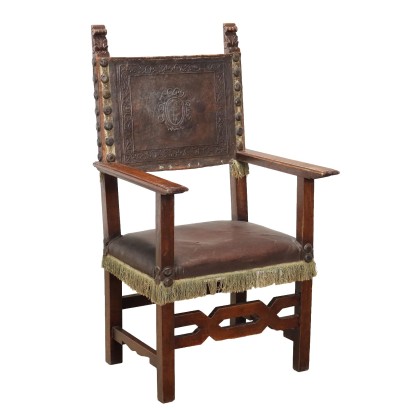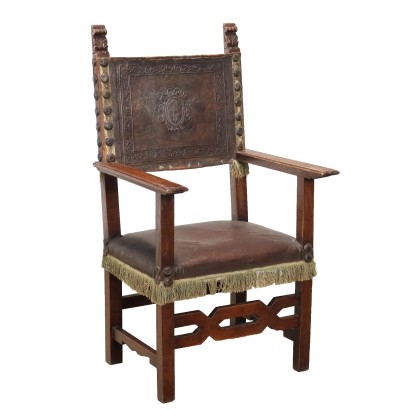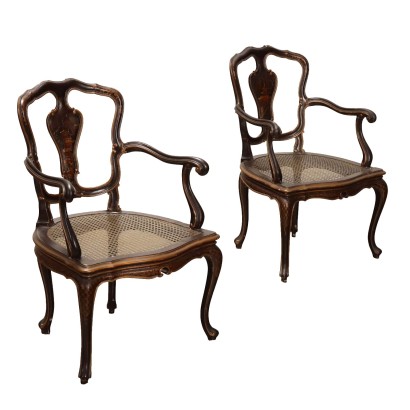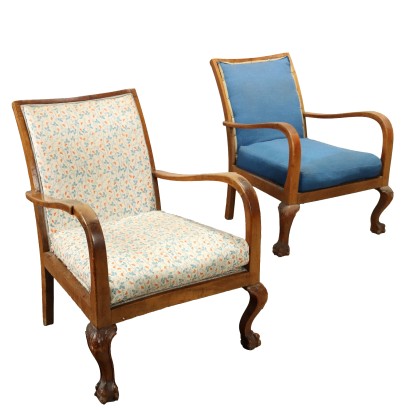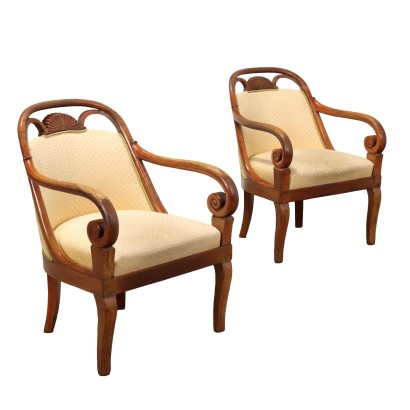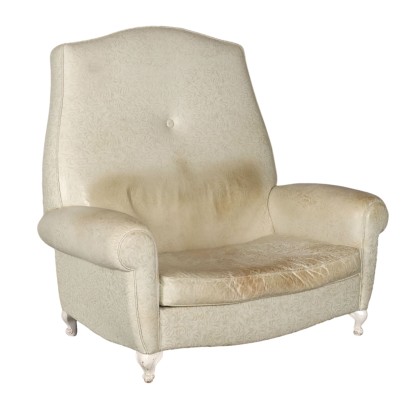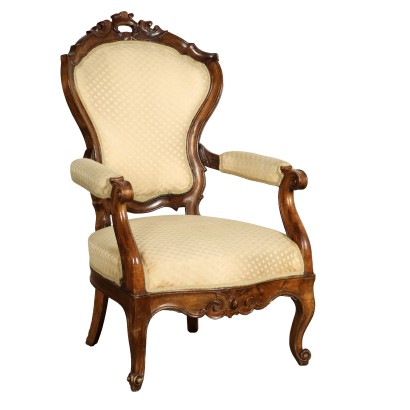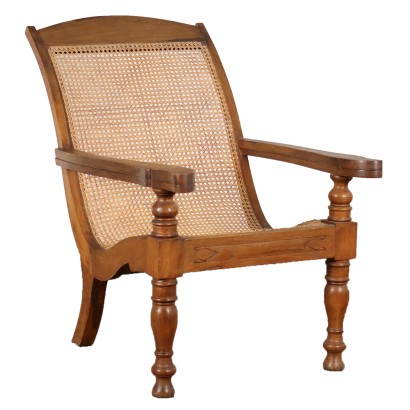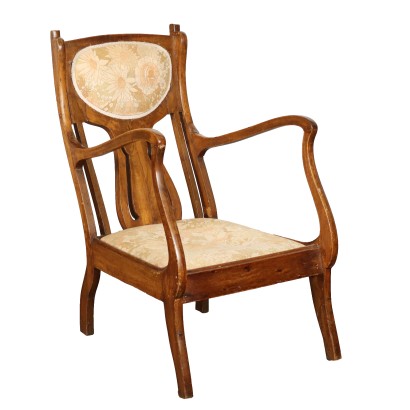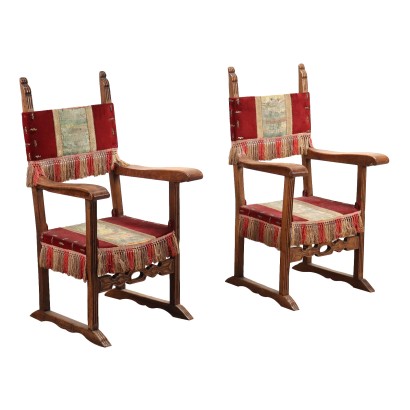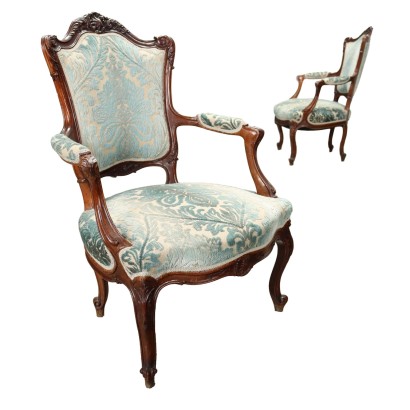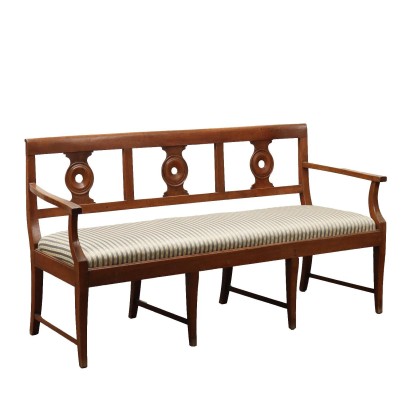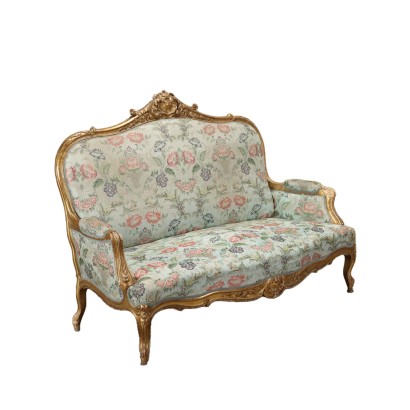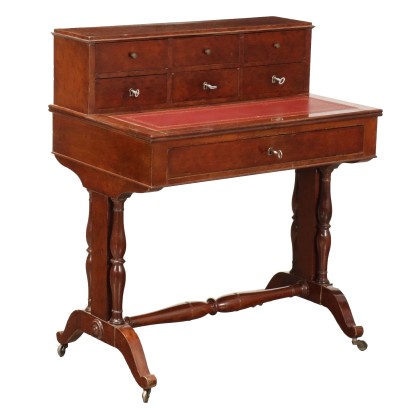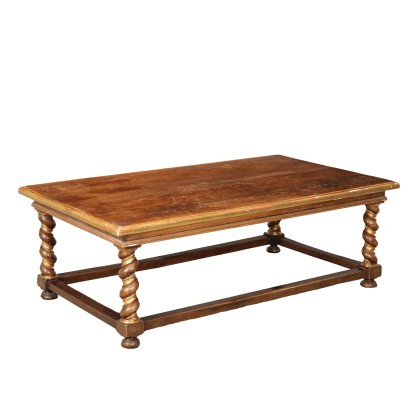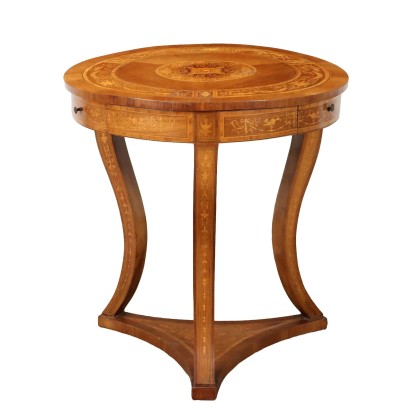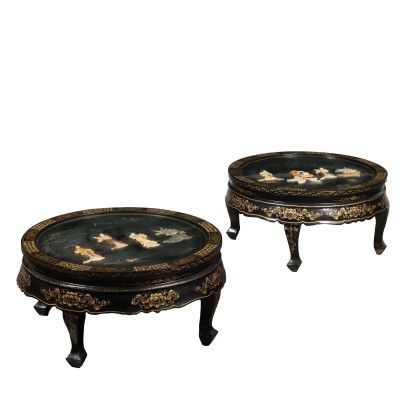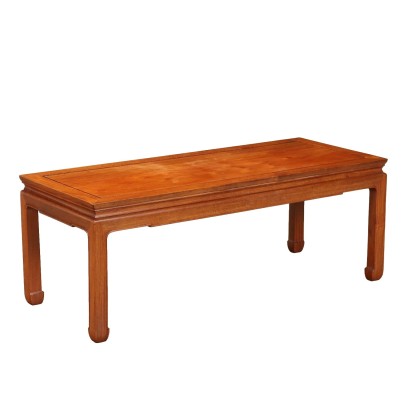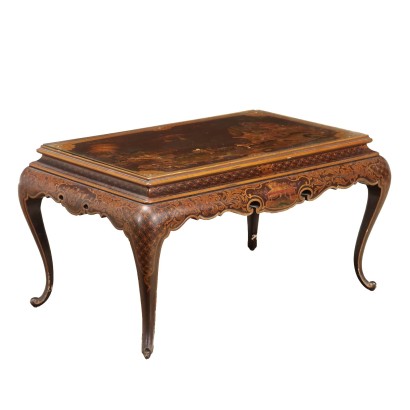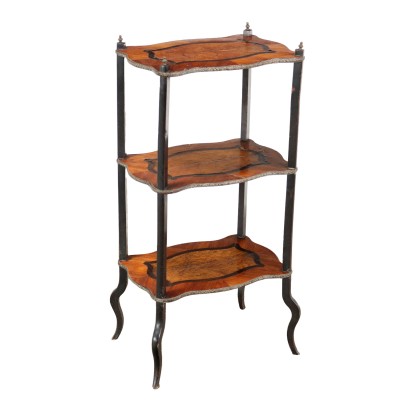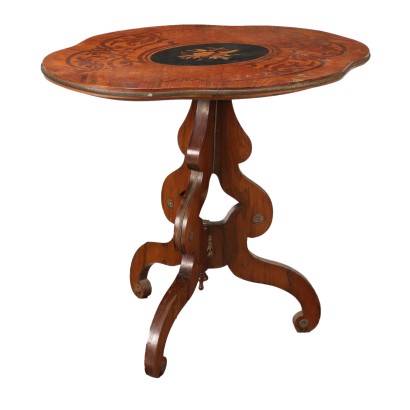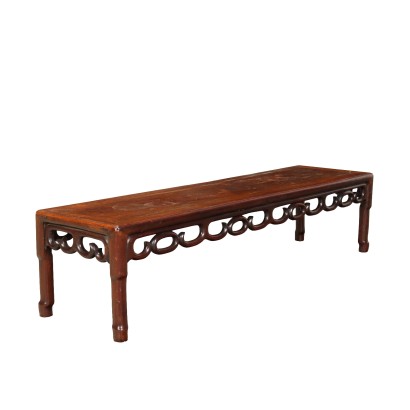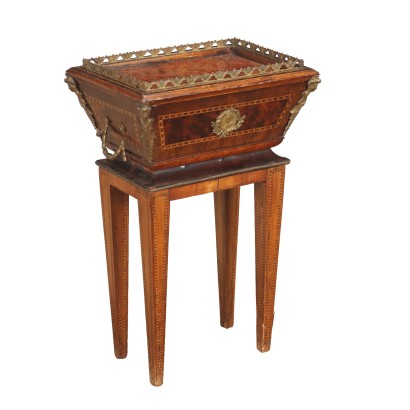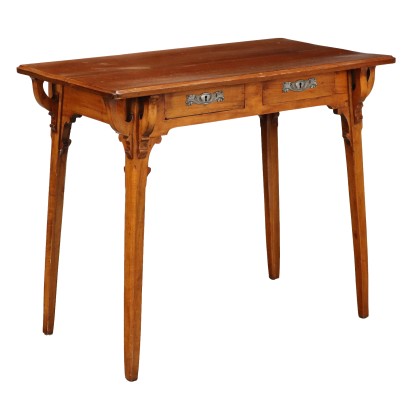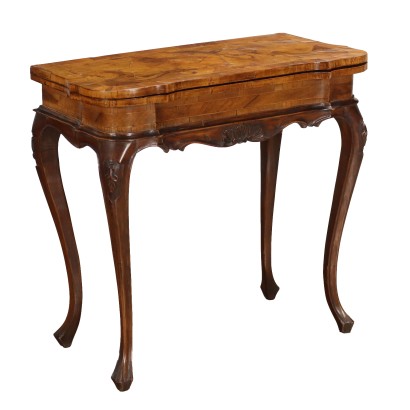Antique Neo-Baroque Throne Walnut Leather Seat Italy XX Century - Italy, Early XX Century
Features
Italy, Early XX Century
Style: Neo-Baroque (1860-1890)
Age: 20th Century / 1901 - 2000
Origin: Italy
Main essence: Walnut
Description
Neo-baroque throne with lion's feet and flames carved with a leaf motif; in walnut, the seat and raised backrest are lined in leather fixed with studs.
Product Condition:
Product which due to age and wear requires restoration and re-polishing. We try to present the real state of the furniture as completely as possible with photos. If some details are not clear from the photos, what is stated in the description applies.
Dimensions (cm):
Height: 130
Width: 64
Depth: 64
Diameter: 52
Additional Information
Style: Neo-Baroque (1860-1890)
Anticipated in England in the first half of the 19th century on reminiscences of the Elizabethan style, it returns in vogue around 1870, but interpreted in a very free way.At the beginning it represents a response to the frivolity of the neo-rococo, but soon expires in a pompous and eclectic style that combines severe sixteenth-century elements with early seventeenth-century sculptural decorations.
The furniture is solid, richly carved and carved, in wood with a dark patina.
Masks, cornices, columns carved with herms that make up typical architectural structures of Renaissance palaces, are the elements that characterize the neo-Renaissance style.
It was an era in which we saw the revival and the revival of ancient forms with a typically Renaissance taste, large carvings were used for an all-round, deeper and three-dimensional vision, the use of feral legs in the caissons and in the wardrobes, squares and moldings, frames, ashlar and nails, Romanesque ornamental motifs but also acanthus leaves, cartouches and lion heads.
Often in this period the furniture is built using ancient materials and parts of Renaissance furniture.
Walnut was often used but also less hard essences such as poplar or others since they were often darkened and presented in black.
Find out more with the insights of our blog:
The Neobarocco in a large table of '800
Age: 20th Century / 1901 - 2000
20th Century / 1901 - 2000Main essence: Walnut
Walnut wood comes from the plant whose botanical name is juglans regia , probably originally from the East but very common in Europe. Light or dark brown in color, it is a hard wood with a beautiful grain, widely used in antique furniture. It was the main essence in Italy throughout the Renaissance and later had a good diffusion in Europe, especially in England, until the advent of mahogany. It was used for solid wood furniture and sometimes carvings and inlays, its only big limitation is that it suffers a lot from woodworm. In France it was widely used more than anything else in the provinces. In the second half of the eighteenth century its use decreased significantly because mahogany and other exotic woods were preferred.Other customers have searched:
Poltrona, seggiolone, trono, poltrona antica, poltrona da ufficio, bergère ..
Dai un'occhiata anche ai nostri approfondimenti sul blog e alle presentazioni di FineArt:
Leggi di più
La poltrona Bergère: trasformazioni di un intramontabile classico
Dici relax e pensi poltrona
Breve storia della sedia, dall'Antico Egitto alla produzione in serie
Seggiolone, Roma XVII secolo
E dai un'occhiata anche alle poltrone tra gli arredi di design
Poltrone Delfino, Erberto Carboni per Arflex
Poltrona 'Fiorenza', Franco Albini per Arflex
Poltrona Regent, Marco Zanuso per Arflex
Poltrone Delfino, Erberto Carboni per Arflex
Poltrona '806' Carlo De Carli per Cassina
Sull'antiquariato in generale dai un'occhiata anche a:
Classic Monday: da un pezzo dei nostri magazzini alla storia dell'antiquariato
L'antiquariato dalla A alla Z: il Dizionario dell'Antiquariato
Il dizionario dell'antiquariato - Lastronatura
Il dizionario dell'antiquariato - Mascherone
Il dizionario dell'antiquariato - Natura morta
Il dizionario dell'antiquariato - Opificio
Il dizionario dell'antiquariato - Pastiglia
Il dizionario dell'antiquariato - Savonarola
Il dizionario dell'antiquariato - Rosone
Intaglio barocco con motivo a ricciolo
Leggi di più
La poltrona Bergère: trasformazioni di un intramontabile classicoDici relax e pensi poltrona
Breve storia della sedia, dall'Antico Egitto alla produzione in serie
Seggiolone, Roma XVII secolo
E dai un'occhiata anche alle poltrone tra gli arredi di design
Poltrone Delfino, Erberto Carboni per Arflex
Poltrona 'Fiorenza', Franco Albini per Arflex
Poltrona Regent, Marco Zanuso per Arflex
Poltrone Delfino, Erberto Carboni per Arflex
Poltrona '806' Carlo De Carli per Cassina
Sull'antiquariato in generale dai un'occhiata anche a:
Classic Monday: da un pezzo dei nostri magazzini alla storia dell'antiquariato
L'antiquariato dalla A alla Z: il Dizionario dell'Antiquariato
Il dizionario dell'antiquariato - Lastronatura
Il dizionario dell'antiquariato - Mascherone
Il dizionario dell'antiquariato - Natura morta
Il dizionario dell'antiquariato - Opificio
Il dizionario dell'antiquariato - Pastiglia
Il dizionario dell'antiquariato - Savonarola
Il dizionario dell'antiquariato - Rosone
Intaglio barocco con motivo a ricciolo
Product availability
The product can be seen at Cambiago
Immediate availability
Ready for delivery within 2 working days from ordering the product.



